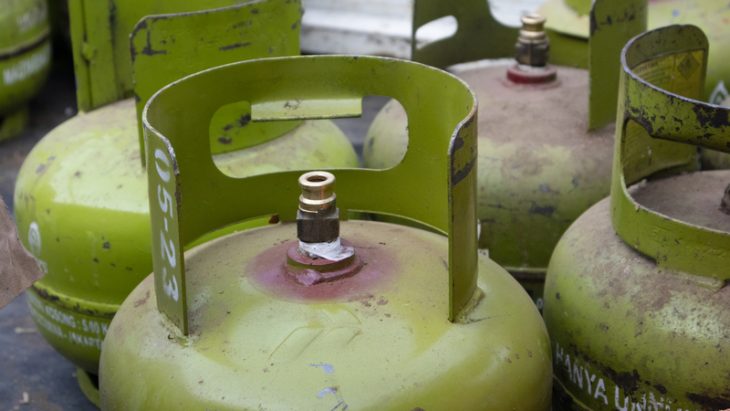Natural gas trade is a key contributor to GDP in several exporting economies, for example contributing 12% of GDP in Qatar and 6% of GDP in Russia, and has been important in meeting energy demand in many importing countries, in especially in Asia and Europe. However, dependence on natural gas imports, especially pipeline gas imports, presents energy security risks for importing countries because gas trade through pipelines presupposes a fixed source and destination, claims Dumitru Chisăliță, president of the Intelligent Energy Association (HER).
“Recent geopolitical events have highlighted the risks to energy security in Europe, which is largely dependent on natural gas imports through pipelines. The desire to reduce import dependence has led to rising gas prices and concerns about meeting energy demand in Europe in 2021,” the AEI analysis said.
Energy commodities like oil and coal, which can be shipped easily, are more easily traded globally, while commodities like electricity, which require a network of transmission lines, have much more localized trade. Natural gas falls in the middle. Historically, the majority of natural gas trade has occurred through pipeline networks, which are physically limited on a regional scale. However, trade in liquefied natural gas (LNG), which is first cooled to liquefy for transport and then regasified at its destination, has grown rapidly. LNG exports have tripled since 2000 and will account for just over half of international gas trade in 2021. Emerging LNG infrastructure, such as floating storage and regasification units, provides additional potential for LNG to be supplied in many regions globally, beyond those regions with onshore gas terminals. Natural gas trading capacity will continue to grow in the coming decades; Commercial gas infrastructure under construction and proposed corresponds to an 85% and 28% increase in LNG terminal (liquefaction, storage and regasification) and pipeline capacity respectively. Natural gas trading is unique among energy commodities in that the two dominant means of trade have very different physical and market characteristics and, as a result, have different future growth expectations.
Several factors could affect the future evolution of the natural gas trade. On the supply side, increased resource availability could change regional patterns of production, trade and consumption. For example, in the United States, the shale gas revolution has enabled the US to move from being a net importer of LNG to a major net exporter of LNG. On the demand side, reduced trade and demand for transportation services due to the COVID-19 pandemic temporarily reduced gas demand. Regional transitions to a low-carbon economy and the availability of renewable energy and electricity storage technologies could also decrease demand for natural gas. On the other hand, regions transitioning from higher-emitting fuels such as coal could have higher demands for natural gas in the near term. Trade-related factors, such as the availability and cost of various trade infrastructure or geopolitical barriers to trade, could affect the trajectory of overall natural gas production, consumption and trade, as well as the relative growth of LNG versus pipeline gas traded in different regions. Therefore, it is important to consider the interactions between the multiple factors affecting natural gas trading, as well as the evolution of the natural gas trading sector in the context of other sectors of the energy system and economy.
Natural gas will play an important role in the next minimum 15 years in the energy mix of Europe, but it must be transposed in the middle of the Gases of the Future, in a gas complex that reduces the impact on climate change. Gases of the Future or Green Gas is a concept that involves the use of natural gas mixed with biomethane (obtained from household, agricultural, industrial waste, etc.), with energetic hydrogen (produced as a result of extraproduction of renewable resources) and the reduction of CO2 emissions (capturing , carbon transport, use and storage).
Practically, if CO2 emissions have continuously increased worldwide in the last 30 years, at the European level it has decreased in all sectors, except for transport.
Romania has the seventh lowest average consumption of CO2 emissions per person in Europe, 20% lower than the world average and 58% lower than the European average. This situation, conjunctural due to the closure of the Romanian industry in the last 34 years, but especially to the energy poverty in which about 40% of the Romanian population lives.
Thus, Romania has the historic chance, as it did 115 years ago in the field of natural gas, to be among the top European and world countries as the greenest country, through the development of Future Gas, the Green Gas. Just like 115 years ago when natural gas was accidentally discovered on the current territory of Romania, today Romania finds itself in a situation where it has only 10% more CO2 emissions than the European country with the lowest CO2 emissions. CO2 per person. Just as 100 years ago – there was a visionary – Constantin Ioan Motaș – who launched the idea of gasifying Romania in 1919, there was a Government – the Government of I.C. Brătianu – who supported and promoted the development of Romania, as a country in which to use natural gas, for the first time in Europe, and there were investors who were left to complete this work – today we need a Government and Investors, who will same things with Green Gases.
